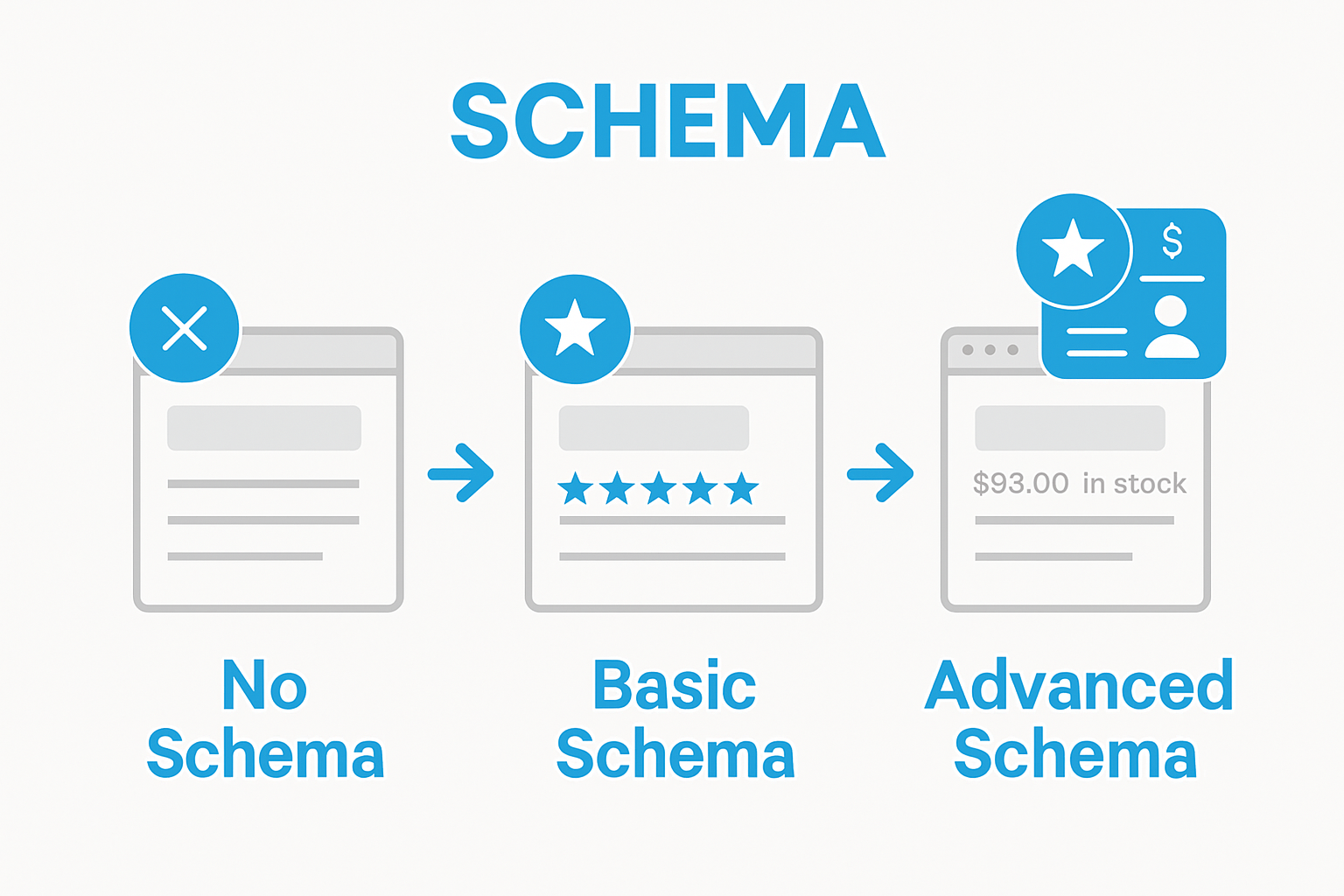Structured data sounds technical, but it holds the power to change how websites show up on Google. Some websites that implement structured data see a dramatic jump in click-through rates and search result visibility. Most people think keywords are the whole story in SEO, but the real winners are using structured data to send clear signals that search engines cannot ignore.
Table of Contents
- What Is Structured Data And Its Role In Seo?
- Why Structured Data Matters For Search Engine Optimization
- How Structured Data Enhances Search Results And User Experience
- Key Concepts And Types Of Structured Data In Seo
- Real-World Applications Of Structured Data In Seo Strategies
Quick Summary
| Takeaway | Explanation |
|---|---|
| Implement Structured Data for SEO | Adding structured data enhances how search engines interpret your website’s content, improving visibility and ranking opportunities. |
| Unlock Rich Search Results | Use structured data to enable rich snippets, knowledge panels, and visual enhancements that attract more clicks. |
| Choose the Right Schema Types | Different content types require specific schemas, so select the right types for better search engine context understanding. |
| Enhanced User Experience | Structured data improves search result relevance, allowing users to quickly assess content without extensive clicks. |
| Monitor Impact on Performance | Regularly check the performance of structured data implementations to gauge improvements in click-through rates and search visibility. |
What is Structured Data and Its Role in SEO?
Structured data represents a systematic method of organizing digital information to help search engines understand website content more precisely. By providing explicit context about webpage elements, structured data transforms raw content into machine-readable format that enables more intelligent search result presentation.
Understanding the Fundamentals
At its core, structured data acts like a detailed translator between your website and search engine algorithms. When you implement structured data, you’re essentially adding a layer of metadata that describes your content with specific code formats like JSON-LD, Microdata, or RDFa. These formats communicate critical details about webpage elements such as products, events, articles, and organizational information.
Learn more about semantic HTML for SEO implementation can provide additional insights into how structured data connects with broader SEO strategies.
Key characteristics of structured data include:
- Provides clear, unambiguous information about webpage content
- Enables rich search result features like featured snippets
- Improves search engine comprehension of complex information
- Enhances potential for enhanced search result displays
SEO Impact and Benefits
Search engines like Google use structured data to generate more informative search results. By implementing structured data, websites can unlock powerful visual enhancements such as rich snippets, knowledge panels, and carousel displays.
 These enhanced search results can significantly improve click-through rates and visibility.
These enhanced search results can significantly improve click-through rates and visibility.
According to research from Utah State University, implementing structured data helps search engines interpret website content more accurately, potentially leading to better ranking opportunities and more targeted search visibility.
Website owners and SEO professionals recognize structured data as a critical strategy for improving search engine understanding, ultimately driving more qualified organic traffic to their digital properties.
Why Structured Data Matters for Search Engine Optimization
Structured data has emerged as a powerful mechanism for enhancing website visibility and search engine performance. By transforming complex digital content into machine-readable formats, structured data enables more sophisticated and targeted search experiences that directly impact online visibility and user engagement.
Enhancing Search Result Presentation
Search engines leverage structured data to create more dynamic and informative search results. When websites implement structured data correctly, they unlock opportunities for rich snippets, knowledge panels, and enhanced visual displays that stand out in search results. These advanced presentation formats can dramatically improve click-through rates and attract more targeted organic traffic.
Explore our comprehensive guide on SERP features to understand how structured data transforms search result appearance.
Key advantages of structured data for search optimization include:
- Improved search engine comprehension of webpage content
- Enhanced visual representation in search results
- Increased potential for featured snippet placements
- More precise targeting of user search intent
Technical and Strategic SEO Benefits
Beyond visual enhancements, structured data plays a critical role in technical SEO strategy. According to research from the HTTP Archive, implementing structured data helps search algorithms more accurately interpret webpage context, potentially improving ranking signals and search relevance.
Websites that strategically implement structured data can expect more nuanced search engine understanding, which translates into better indexing, more precise content categorization, and potentially higher search rankings. By providing clear, unambiguous information about webpage elements, structured data serves as a sophisticated communication protocol between websites and search engine algorithms.
How Structured Data Enhances Search Results and User Experience
Structured data transforms digital content presentation by providing search engines with precise, contextual information that enables more intelligent and engaging search result displays. This sophisticated approach goes beyond traditional keyword matching, creating a more nuanced and user-friendly search experience.
Rich Search Result Features
By implementing structured data, websites can unlock advanced visual features that significantly improve search result appearance. Rich snippets enable search engines to display additional context directly in search listings, such as product ratings, event details, recipe cooking times, or article publication dates. These enhanced visual elements make search results more informative and attractive, encouraging higher click-through rates.
Learn more about semantic search strategies to understand how structured data connects with broader search optimization techniques.
Key visual enhancements enabled by structured data include:
- Star ratings and review summaries for products
- Event dates and ticket availability information
- Recipe preparation times and ingredient lists
- Author and publication details for articles
- Professional contact information for businesses
Improving User Search Experience
According to Google’s official developer documentation, structured data enables more comprehensive and visually appealing search results. By providing clear, machine-readable information, websites help search engines generate more precise and contextually relevant search listings.
This approach significantly improves user experience by allowing searchers to quickly assess the relevance of search results without clicking through multiple pages. Users can now get immediate insights into content, making their search process more efficient and targeted. Structured data essentially acts as a sophisticated communication bridge between websites, search engines, and potential visitors.
Key Concepts and Types of Structured Data in SEO
Structured data represents a sophisticated framework for organizing digital content, enabling more precise communication between websites and search engines. By utilizing standardized formats and vocabularies, structured data transforms complex information into easily interpretable signals that enhance search engine understanding and user experience.
Fundamental Data Formats
Structured data primarily employs three main implementation formats: JSON-LD, Microdata, and RDFa. Each format offers unique approaches to embedding machine-readable information within webpage content. JSON-LD (JavaScript Object Notation for Linked Data) has emerged as the preferred method, recommended by major search engines due to its flexibility and ease of implementation.
Explore our detailed guide on FAQ schema implementation to understand how specific structured data types can be applied effectively.
Key characteristics of structured data formats include:
Below is a comparison table of the main structured data formats used in SEO, highlighting their key characteristics and differences.
| Format | Description | Recommended By | Integration Style |
|---|---|---|---|
| JSON-LD | JavaScript-based linked data format; easy to implement and flexible | Major search engines | Placed inside |

